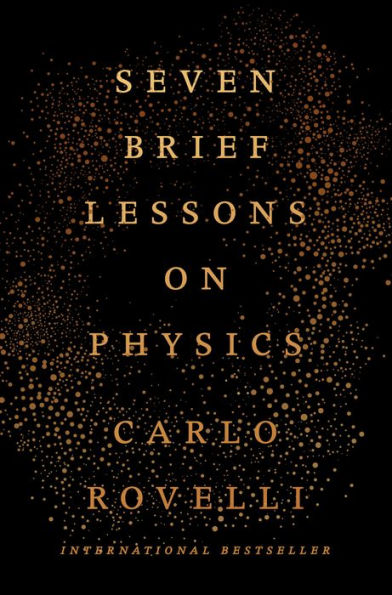“One of the year’s most entrancing books about science.”—The Wall Street Journal
“Clear, elegant...a whirlwind tour of some of the biggest ideas in physics.”—The New York Times Book Review
This playful, entertaining, and mind-bending introduction to modern physics briskly explains Einstein's general relativity, quantum mechanics, elementary particles, gravity, black holes, the complex architecture of the universe, and the role humans play in this weird and wonderful world. Carlo Rovelli, a renowned theoretical physicist, is a delightfully poetic and philosophical scientific guide. He takes us to the frontiers of our knowledge: to the most minute reaches of the fabric of space, back to the origins of the cosmos, and into the workings of our minds. The book celebrates the joy of discovery. “Here, on the edge of what we know, in contact with the ocean of the unknown, shines the mystery and the beauty of the world,” Rovelli writes. “And it’s breathtaking.”
“One of the year’s most entrancing books about science.”—The Wall Street Journal
“Clear, elegant...a whirlwind tour of some of the biggest ideas in physics.”—The New York Times Book Review
This playful, entertaining, and mind-bending introduction to modern physics briskly explains Einstein's general relativity, quantum mechanics, elementary particles, gravity, black holes, the complex architecture of the universe, and the role humans play in this weird and wonderful world. Carlo Rovelli, a renowned theoretical physicist, is a delightfully poetic and philosophical scientific guide. He takes us to the frontiers of our knowledge: to the most minute reaches of the fabric of space, back to the origins of the cosmos, and into the workings of our minds. The book celebrates the joy of discovery. “Here, on the edge of what we know, in contact with the ocean of the unknown, shines the mystery and the beauty of the world,” Rovelli writes. “And it’s breathtaking.”

Seven Brief Lessons on Physics
96
Seven Brief Lessons on Physics
96Related collections and offers

Product Details
| ISBN-13: | 9780399184437 |
|---|---|
| Publisher: | Temple Publications International, Inc. |
| Publication date: | 03/01/2016 |
| Sold by: | Penguin Group |
| Format: | eBook |
| Pages: | 96 |
| Sales rank: | 35,502 |
| File size: | 1 MB |
About the Author
Customer Reviews
Explore More Items
Stephen Hawking has dazzled readers worldwide with a string of bestsellers exploring the mysteries of the universe. Now, for the first time, perhaps the most brilliant cosmologist
A landmark volume in science writing by one of the great minds of our time, Stephen Hawking’s book explores such profound questions as: How did the
*Los Angeles Times
"POWERFUL . . . A
En esta obra póstuma, el brillante astrofísico y ganador del Premio Pulitzer Carl Sagan combina magistralmente astronomía, física, biología, filosofía, mitología y
"One of the funniest and most unusual books of the year....Gross, educational, and unexpectedly sidesplitting."—Entertainment Weekly
Stiff is an oddly compelling, often hilarious exploration of
“America’s funniest science writer” (Washington Post) asks the questions children ask in this young readers adaptation of her best-selling Packing for Mars.
What is it like to floatA New York Times Bestseller
"Rich in dexterous innuendo, laugh-out-loud humor and illuminating fact. It’s compulsively readable." —Los Angeles Times Book Review
In Bonk, the best-selling
Einstein said that the most incomprehensible thing about the universe is that it is comprehensible. But was he right? Can the quantum theory of fields and Einstein's general theory of relativity, the
Čitatelje diljem svijeta Stephen Hawking očarao je nizom bestselera u kojima istražuje tajne svemira. Sad se prvi put vjerojatno najgenijalniji kozmolog našeg vremena okrenuo
